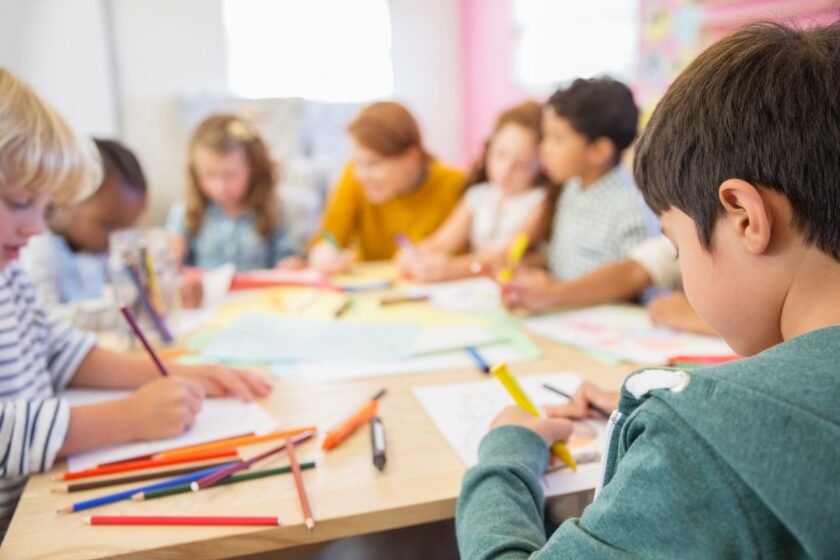A Compass for Future Learning
At A Child’s World, we want to set your children in the right direction! That’s why our academic programs are designed to provide quality education that prepares them for continued growth and success.
Education For the Future
Our Approach
At A Child’s World, we follow the Golden Rule: treat others the way you want to be treated. Our goal is to offer a curriculum-based, safe learning environment that supports both students and parents. Our dedicated teachers encourage each child’s physical, social, and emotional development while sparking their natural curiosity about the world!
- We partner with each family to identify individual goals and plans for the children.
- We develop skills in communication, gross motor, fine motor, problem-solving, and personal-social.
- We ensure each member of our community receives the support they need to succeed.

Find Your Program
Ages 0-1
Infants
Watch your baby thrive with the help of our Infant program!
- We focus on sensory, language, social-personal and cognitive development
- We use natural materials, open spaces, and aesthetically pleasing surroundings
- All teaching activities help stimulate infant learning
Ages 1-2
Toddlers
Our Toddler program is both educational and fun, as we believe no two children are alike.
- Teachers act as facilitators, observing and documenting children’s activities and interests
- Children are encouraged to express themselves through art, music, movement, and language
- We see parents as partners in their children’s education
Ages 3-4
Preschool
Our Preschool classes focus on child centered-learning and developing social and problem-solving skills!
- Encouragement of children to take an active role in their own learning
- Emphasis on collaboration and cooperation among children
Ages 4-5
Pre-K
Our Pre-K classes focus on achieving academic milestones and developing social and problem-solving skills!
- This program is the building block for each child’s preparation for Kindergarten and beyond!
- A school-like schedule that prepares them for the transition
- Personalized goals set for each student
Ages 4-5
Pre-K Counts
Our Pre-K classes focus on achieving academic milestones and developing social and problem-solving skills!
- This program is the building block for each child’s preparation for Kindergarten and beyond!
- A school-like schedule that prepares them for the transition
- Personalized goals set for each student
5 years old
Kindergarten & K-Enrichment Program
Full Day
- Integrated Curriculum: Unique integration of hands-on experiential learning.
- Reading Readiness: Emphasis on developing reading skills through a blend of whole language and phonics.
- Mathematics: Introduction to major mathematical concepts, with a focus on four-function mathematics.
- Thematic Approach: Engaging projects that require the application of reading and math skills.
- Exceeding Standards: Curriculum surpasses Early Learning Standards set by the Department of Education.
Half Day
- Integration with Public School: Supplemental program for children attending half-day Kindergarten in local elementary schools.
- Transportation Provided: Convenient transportation to and from local elementary schools.
- Comprehensive Enrichment: Enriching activities to enhance your child’s learning experience beyond the classroom.
School-Age
We offer before and after school care, so students can relax with friends and enjoy activities!
- Fun and engaging activities for every age
- Childcare services offered during school breaks and holidays
Summer Camp
Summertime means endless adventures!
- Imagination and adventure await your child in our camp program.
- Age-appropriate field trips for older or younger children to maximize their enjoyment
- Outdoor activities to further develop gross motor skills
- Children will learn independence and self-awareness by exploring what interests them.